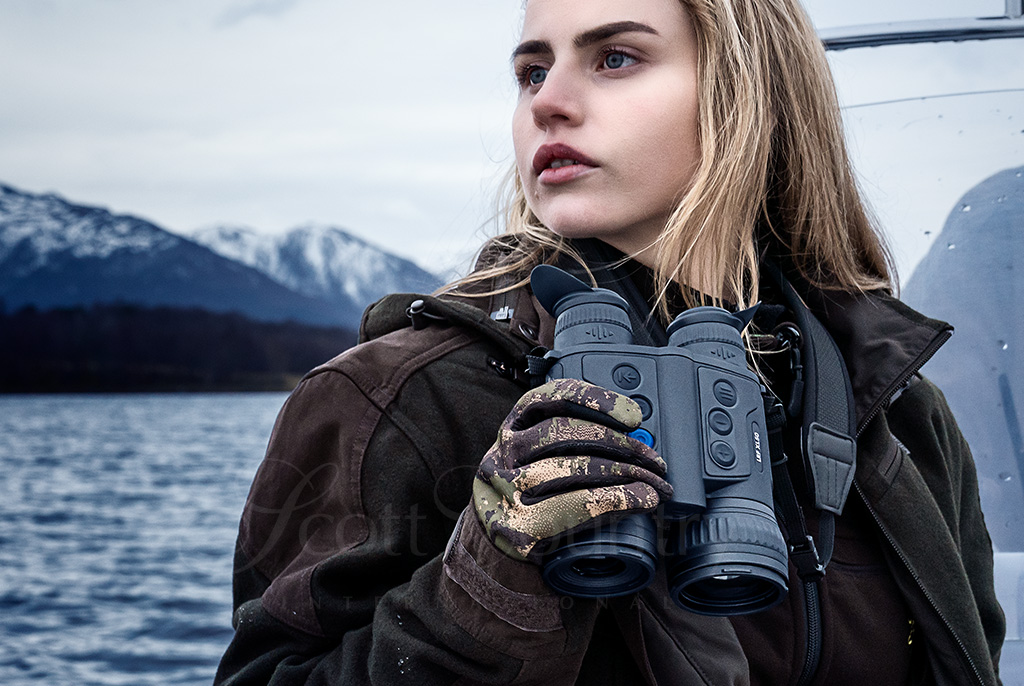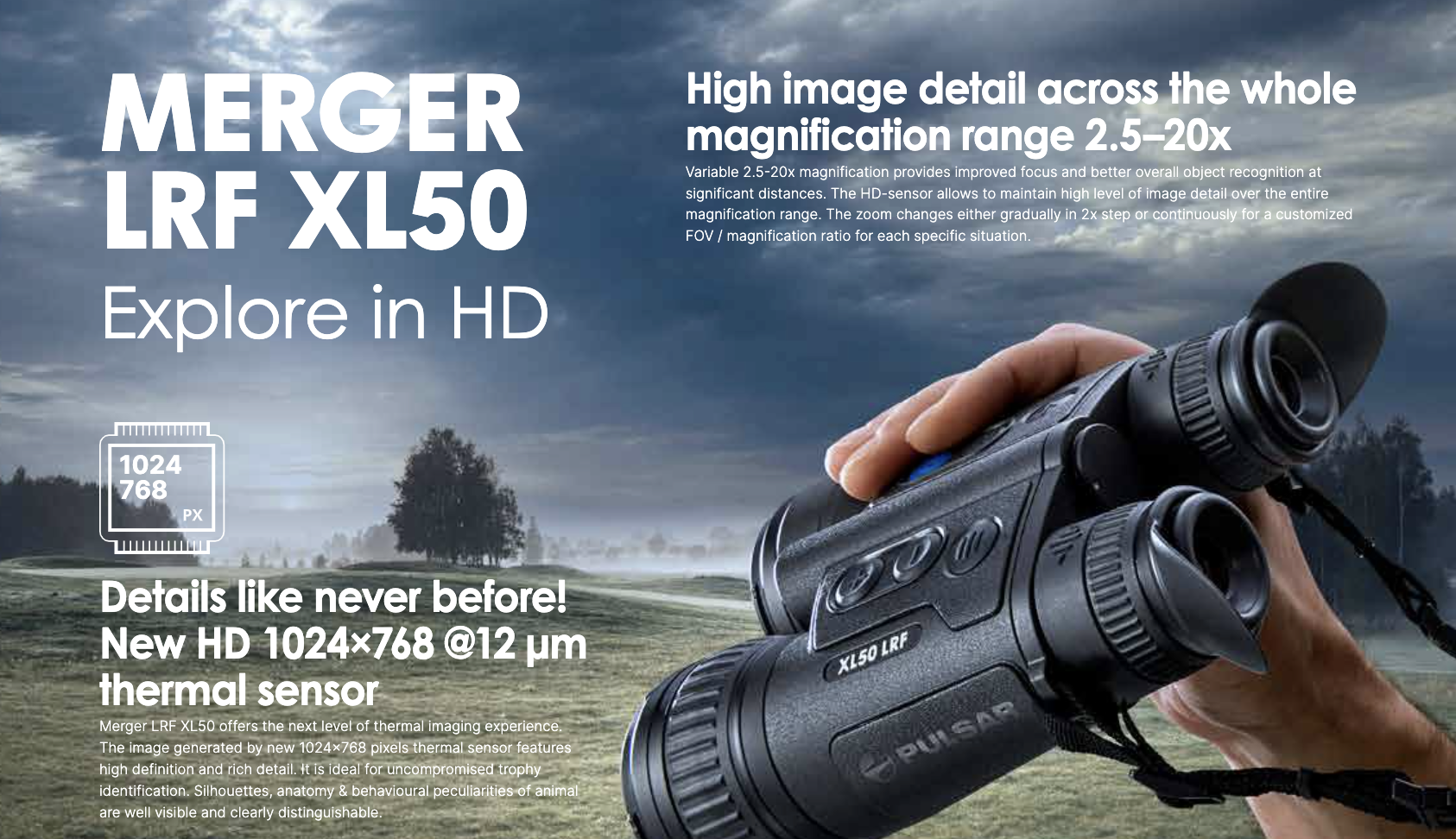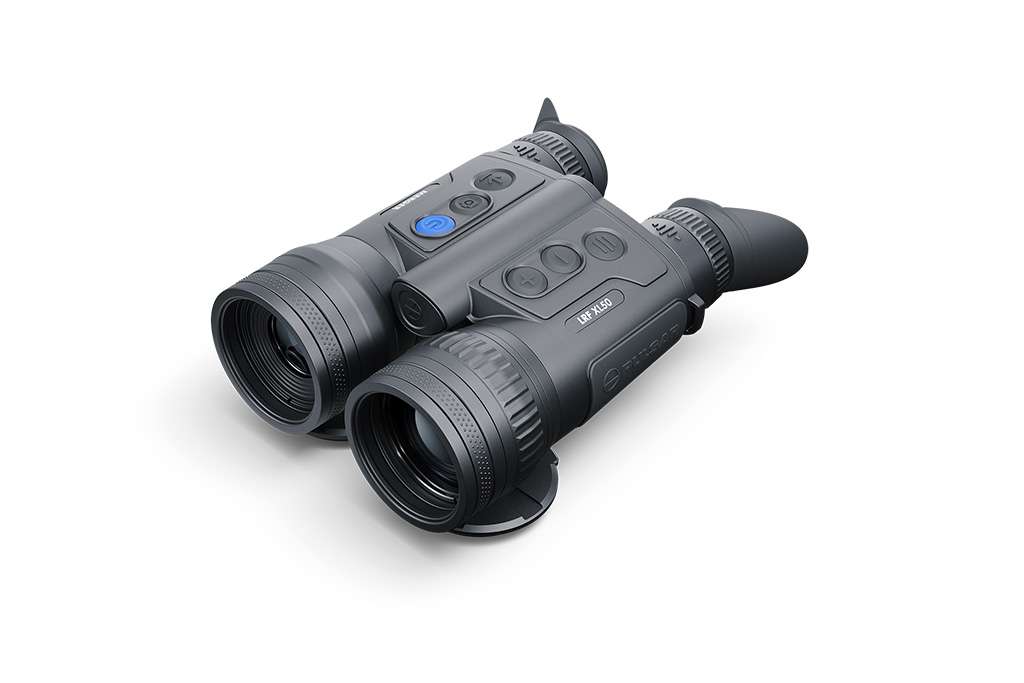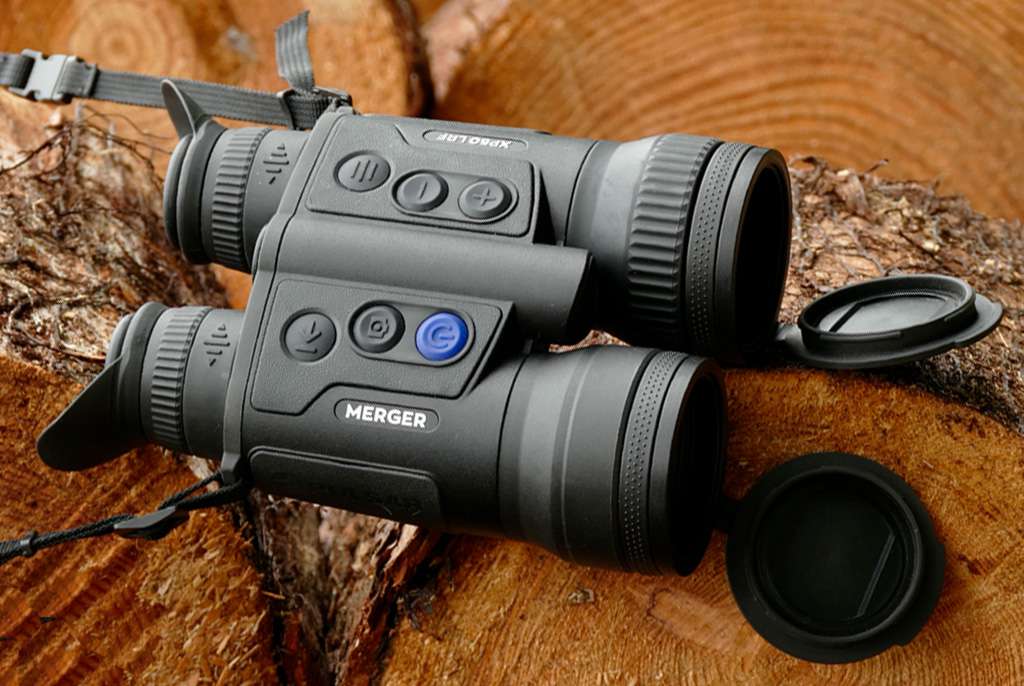Welcome to Scott Country International, the UK's leading specialist in night vision and thermal imaging.

Exploring the world is so much more exciting when you can see a long way. Up on the highlands looking across a valley, you might see movement on the slopes, but the light is fading and you can’t make it out. A deer? An owl? It’s just too far away.
But with a powerful set of binoculars equipped with thermal imaging technology, you can detect wildlife over a kilometre away and track its movement. Choosing a set of binoculars can be tricky, with so many features to take into account. This article compares two similar products from the thermal experts at Pulsar: Merger LRF XL50 and Merger LRF XP50.
These high-definition thermal imaging binoculars use powerful digital magnification and a professional-grade thermal sensor to provide a clear and detailed image over long distances. The benefits of the Pulsar Merger XL50 are in its extra-long detection range, with heat-emitting objects visible up to 2300m away.

The Merger LRF XL50 is a state-of-the-art set of thermal imaging binoculars. While day binoculars provide visibility over distance, thermal binoculars can help you view animals in low-visibility situations such as fog, darkness and dense foliage.
Rather than a single-lens monocular, binocular thermal imagers are much gentler on the eyes. With a binocular system, the Pulsar Merger offers better detection of distant or faint objects and more accurate performance in poor visibility.

While there is a lot of jargon associated with thermal imaging, it’s important to understand some key features and how they will impact your experience with the product.
The XL50 has an HD thermal sensor or microbolometer with a resolution of 1024x768px. This detects differences in temperature in each pixel, combining this data into a highly detailed image on the AMOLED screen.
The low pixel pitch of the XL50 indicates that there are just 12 microns between each pixel on the microbolometer, allowing this imager to provide high levels of detail.
With a powerful sensor, this thermal binocular can detect and display heat emissions from “man-sized” bodies up to 2300m away. At such a distance, the object may only appear as a small number of pixels on the display, but this detection range means you can track and observe the movement of animals while they quickly move away from your position.
The field of view offered by the XL50 is 14o wide by 10.5o high. This is quite wide compared to most thermal imagers, providing a span of 24.6m at 100m from your location.
The Pulsar Merger range of binoculars follows a classic design with ergonomic eyepieces. Six function buttons are strategically placed so that they can be accessed comfortably while holding the binocular, allowing users to adjust the magnification, colouring and more.

This model is very similar to the XL50. The Pulsar Merger XP50 is a thermal binocular with an ergonomic design, perfect for exploring in low-light conditions. Thermal binoculars can be used for wildlife surveys, observation and surveillance over long distances. These types of tools are even used in search and rescue, for example, when mountain rescuers need to find someone in heavy fog.
The XP50 binocular model provides thermal performance with class. The body shell is designed with ergonomics in mind, providing a comfortable viewing experience in binocular vision. Flexible eyepieces block peripheral light from entering the eyes, so you can focus on the image generated.
Ultra-sensitive Thermal Detection: <25mK NETD
The Noise Equivalent Temperature Difference (NETD) value indicates the sensitivity of a product’s thermal sensor. The Merger LRF XP50 is able to show temperature differences of fewer than 25 milli-Kelvin (0.025oC). The lower the NETD rating, the more sensitive the microbolometer or thermal sensor is. A sub-25mK NETD provides a clear and detailed image with minor differences in temperature shown pixel by pixel. In products with higher NETD ratings, the image may be disrupted by rain, fog or mist, which would create ‘noise’ in the image. The XP50 can provide a clear image even in poor weather conditions.
10 hours Operating Time
Two rechargeable battery packs provide long battery life for the Merger LRF XP50. The first power supply is built-in with a capacity of 4 Ah, and another 3.2 Ah battery pack can be clipped on and off and replaced as needed. Altogether, you can use the XP50 for up to 10 hours continuously with dual battery power. The embossed body of the replaceable battery allows for accurate determination of the correct position so that users quickly change batteries in complete darkness by touch alone.
Integrated Laser Rangefinder
The XP50’s built-in laser rangefinder has a range of up to 1 kilometre, allowing you to measure the distance of an object, taking both single measurements and continuous scanning modes. The rangefinder has an accuracy of ± 1 metre and provides quick and error-free assessment of distance.
With only one letter difference in these Pulsar thermal binoculars, they are very close in specification. The key differences are outlined above, and the following table will give you an overview of what features these two products have in common and what sets them apart.
|
Specification |
XL50 |
XP50 |
|
Sensor Resolution |
HD 1024x768 |
640x480 |
|
Pixel Pitch |
12 Micron |
17 Micron |
|
NETD (Thermal Sensitivity) |
<40mK |
<25mK |
|
Display |
AMOLED 1024x768 |
AMOLED 1024x768 |
|
Rangefinder |
1000m |
1000m |
|
Range of detection |
2300m |
1800m |
|
Magnification |
2.5x to 20x |
2.5x to 20x |
|
Field of View |
14ox10.5o |
12.4ox9.3o |
|
Lens |
F50/1.0 |
F50/1.0 |
|
Dimensions |
196.9x140x71.9 mm |
196x143x76 mm |
|
Weight |
0.898kg |
0.8kg |
|
Video Recording |
✔️ |
✔️ |
|
Wifi |
✔️ |
✔️ |
|
Dual Battery Supply |
✔️ |
✔️ |
|
Operating time |
Up to 8 hours |
Up to 10 hours |
|
Picture-in-Picture Magnification |
✔️ |
✔️ |
|
Price (£) |
5899.95 |
4649.95 |
The thermal binoculars you choose depends on your reason for using one. You might require a wider field of view or higher thermal sensitivity, and this will impact your choice. Comparing Pulsar Merger XL50 and XP50 LRF Binoculars highlights that these are highly similar models.
The two models share many key features, including:
Because of how close these two models are, there are only a few factors on which to rest our recommendation. With a choice like this, many people will immediately look to the difference in price, and choose the cheaper option. It is a big difference to some, and when you look at the difference in the thermal sensors, it becomes clear why the XL50 is worth so much more.
The XL50 has a much higher sensor resolution at 1024x768 compared to the XP50’s 640x480, providing almost three times as much image definition at a tighter pixel pitch. This may be made up for somewhat by the lower NETD of the XP50, which is <25mK to the XL50’s <40mK NETD, meaning the higher definition image may have a slight amount more ‘noise’ or interference if conditions are poor.
The XL50’s highly sensitive microbolometer also provides a much greater detection range of 2300m, 500m further than the XP50 can reach. If you’re looking over large tracts of land, or you’re surveying flocks of birds that can move quickly, that extra 500m can give you a greater insight into the behaviour of your observation target. This is also supported by the wider field of view. It may only be a few degrees either way, but over long distances, this can make a huge difference for how much context you have for your observation.
Ultimately, we would recommend the Merger LRF XL50, with the extra cost more than made up for by the superior thermal sensor capabilities. With the high-definition microbolometer, the XL50 lets you see more detail further away.

Scott Country International is a Registered UK trademark (Trade Mark no. UK00003131592)
Scott Country Limited SC433828 is a credit broker, not a lender and is authorised and regulated by the Financial Conduct Authority 721544.
We do not charge you for credit broking services. We will introduce you exclusively to Omni Capital Retail Finance Limited finance products provided by Omni Capital Retail Finance Limited through the Deko platform.
Product specifications listed throughout are subject to manufacturers changes without notice.


